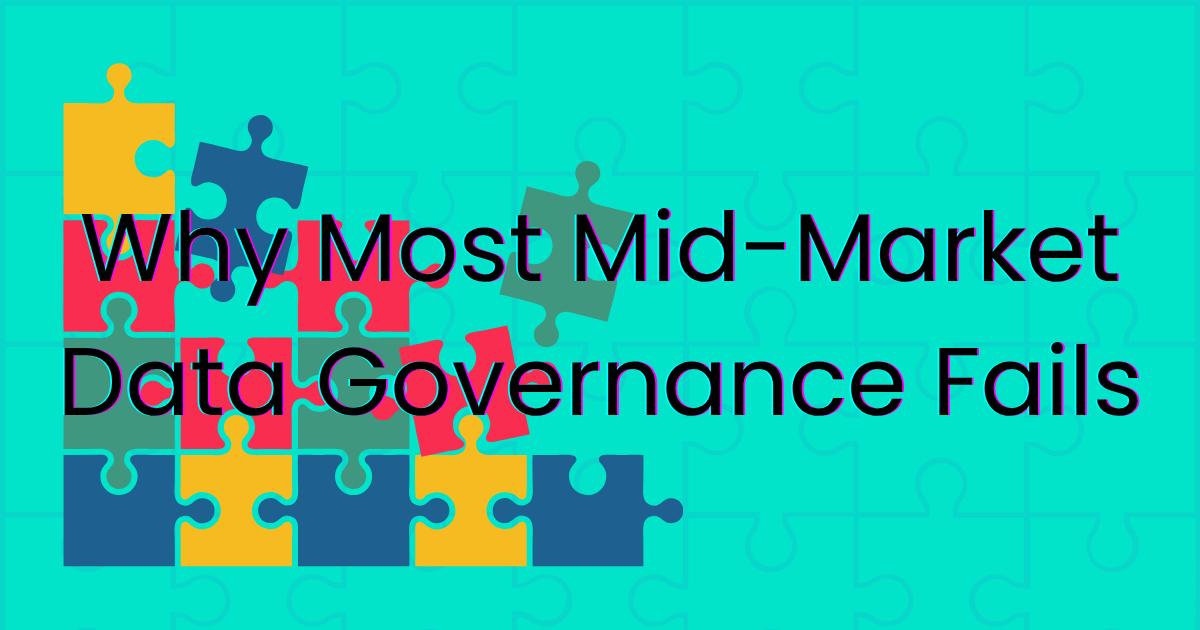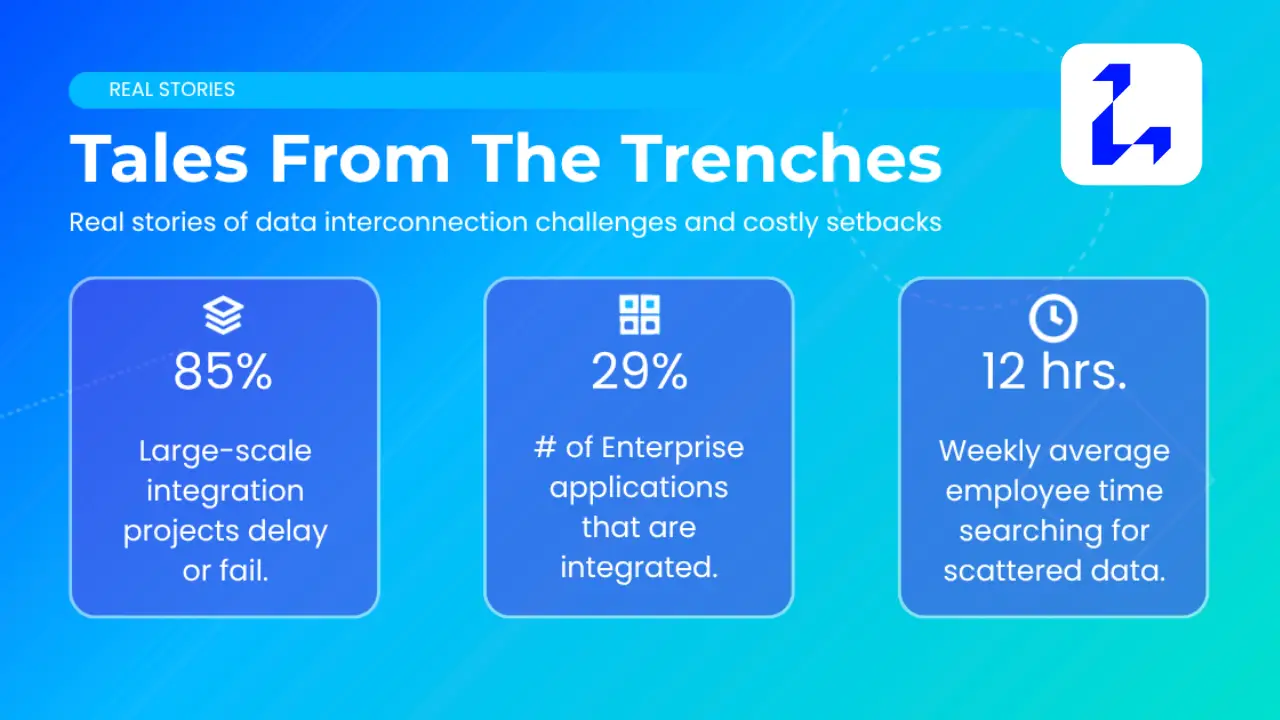Introduction: The Governance Illusion
Data governance is often seen as the silver bullet to fix reporting chaos, integration gaps, and regulatory risk. Yet, for many mid-sized companies, the promise rarely materializes.
Projects start with good intent but stall. Committees are formed, frameworks adopted—and nothing changes. Why?
Because most data governance programs fail not from a lack of effort, but from being overbuilt, under-owned, and disconnected from daily business needs.
Common Pitfalls That Derail Governance Efforts
Here’s what we’ve seen in dozens of mid-market organizations:
1. No Clear Ownership
Without named data stewards or accountable roles, everyone assumes someone else is responsible. Governance becomes theoretical, not operational.
2. Too Complex, Too Early
Big frameworks and 40-page policy documents look impressive—but no one uses them. Complexity crushes adoption.
3. Technology-Led Instead of People-Led
Buying governance tools before establishing data ownership or processes leads to shelfware, not solutions.
4. Executive Sponsorship in Name Only
Without leaders actively driving change and asking for governed outputs, the effort loses momentum fast.
5. No Quick Wins
Governance takes time—but without early indicators of value, teams disengage. Waiting a year for results is too long in most businesses.
What Actually Works (and Scales)
At Locadium, we’ve built a field-tested approach to governance that mid-sized companies can adopt without needing an army of data architects.
Here’s what we recommend—and what’s working:
✅ Start Small and Targeted
Choose one or two high-impact areas (e.g., finance KPIs, sales pipeline metrics) and assign informal stewards. Keep the scope tight.
✅ Focus on Stewardship Before Tools
A spreadsheet with clear owners and definitions is more powerful than an unconfigured data catalog.
✅ Embed Governance into Daily Work
Build it into existing workflows—data validation during report creation, policy reminders in team meetings, dashboard definitions accessible in BI tools.
✅ Review Progress Monthly (Not Quarterly)
Set up lightweight checkpoints. Are definitions being used? Are users finding clarity? Quick adjustments beat perfect plans.
✅ Make the Sponsor Visible
When an executive references governed KPIs in meetings or asks, “Who owns this metric?”, it sends a signal that data governance is real—not theoretical.
Realistic Wins We’ve Helped Deliver
These are practical results that came from governance programs designed for traction, not perfection:
✅ Reduced Spreadsheet Chaos in Finance
By centralizing just three critical reports and defining ownership of key fields (like revenue vs. bookings), one client reduced confusion and cut manual reconciliation time by nearly 50%.
✅ Quick Wins with Access & Ownership Policies
Another client rolled out just two basic policies—data access and data ownership—and piloted them in the operations team. The result? Faster access to dashboards and clearer accountability.
✅ Boosted BI Adoption with Simple Glossary Integration
We helped a team pair their new executive dashboard with a business glossary link beside each metric. The outcome: 30% increase in usage in the first month, thanks to trust and clarity.
These weren’t million-dollar programs. They were focused, well-executed steps grounded in real business priorities.
Don’t Let Governance Become a Ghost Project
If your governance efforts are stalling, don’t double down on complexity. Simplify. Assign ownership. Get a small win. Build from there.
Credibility in data comes from small wins done right, not grand frameworks left unfinished.
If your team could use a quick governance health check, we’re happy to share what’s worked for others.
👉 AskMe.






